Abstract
Human capital estimates of the economic value of life have been routinely used in the past to perform cost-benefit analyses of health programs. Recently, however, serious questions have been raised concerning the conceptual basis for valuing human life by applying these estimates. Most economists writing on these issues tend to agree that a more conceptually correct method to value risks to human life in cost-benefit analyses would be based on individuals.' "willingness to pay" for small changes in their probability of survival. Attempts to implement the willingness-to-pay approach using survey responses or revealed-preference estimates have produced a confusing array of values fraught with statistical problems and measurement difficulties. As a result, economists have searched for a link between willingness to pay and standard human capital estimates and have found that for most individuals a lower bound for valuing risks to life can be based on their willingness to pay to avoid the expected economic losses associated with death. However, while these studies provide support for using individual's private valuation of forgone income in valuing risks to life, it is also clear that standard human capital estimates cannot be used for this purpose without reformulation. After reviewing the major approaches to valuing risks to life, this paper concludes that estimates based on the human capital approach--reformulated using a willingness-to-pay criterion--produce the only clear, consistent, and objective values for use in cost-benefit analyses of policies affecting risks to life. The paper presents the first empirical estimates of such adjusted willingness-to-pay/human capital values.
Full text
PDF
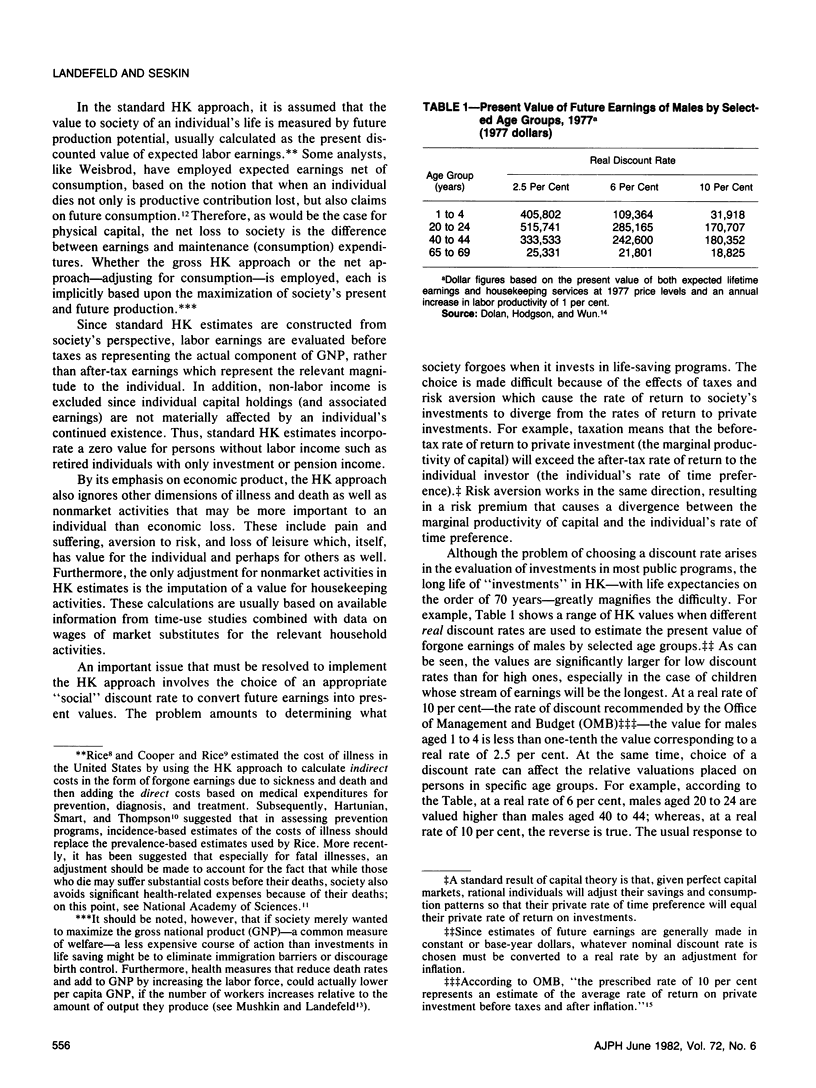
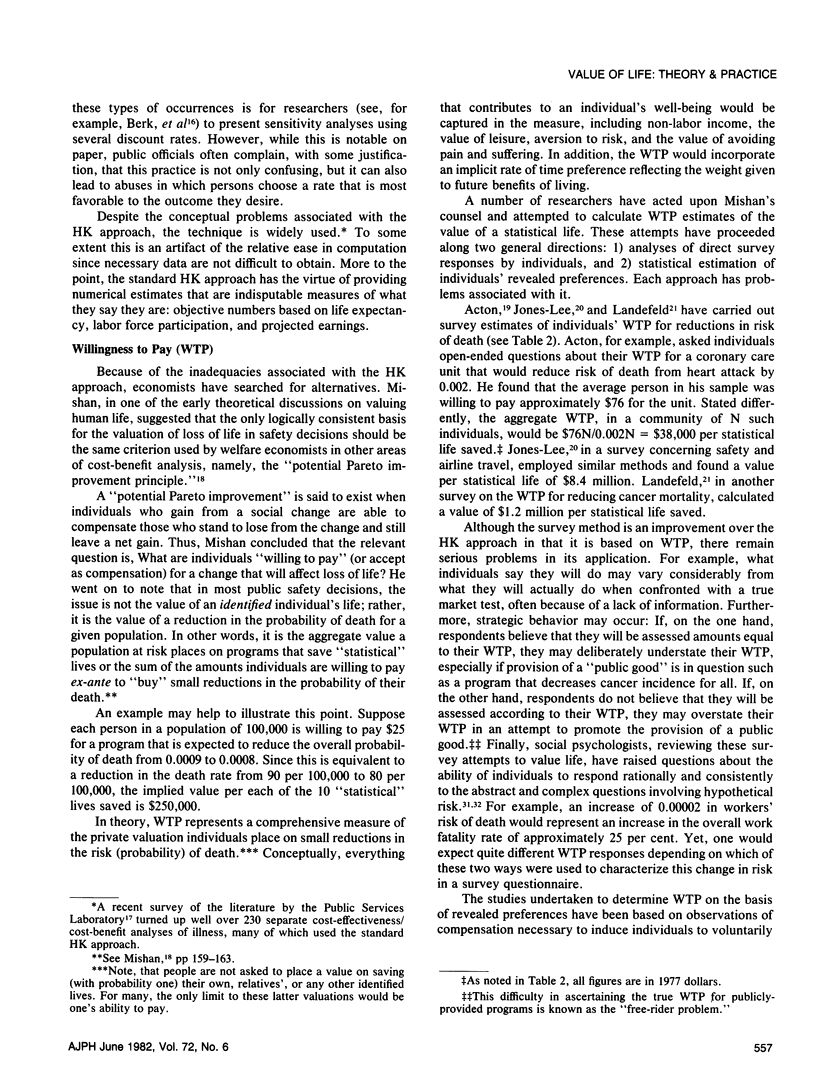
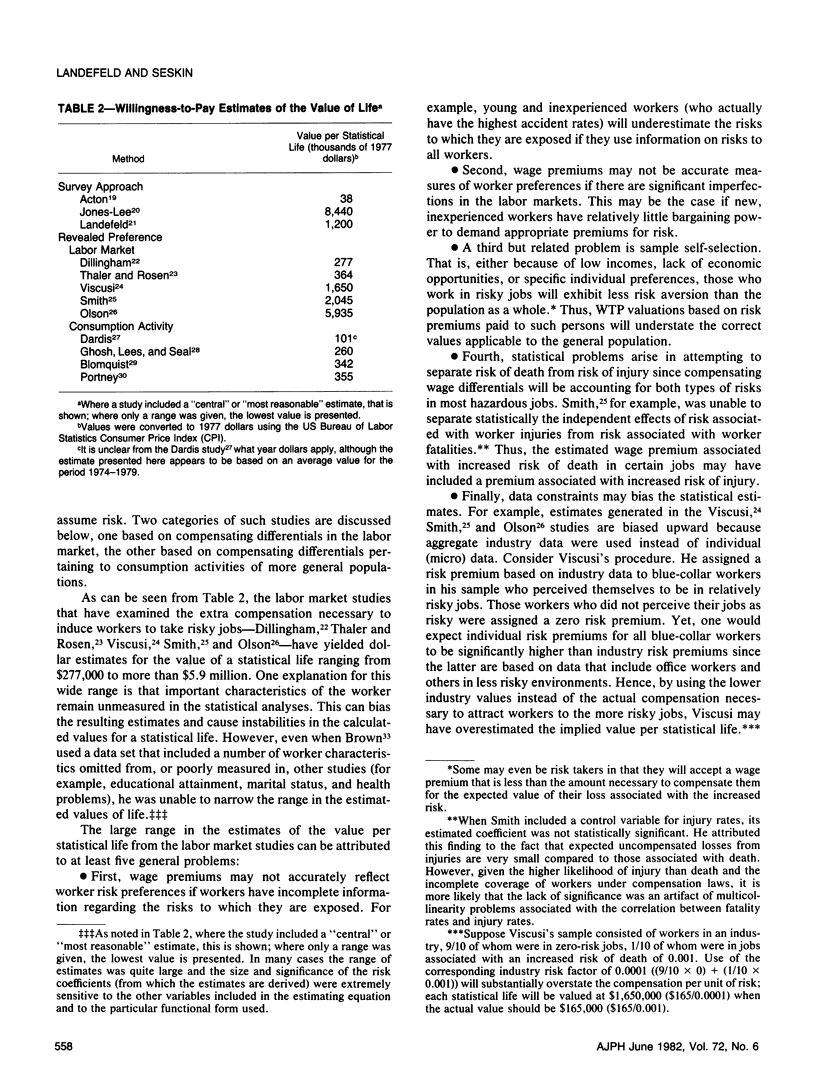
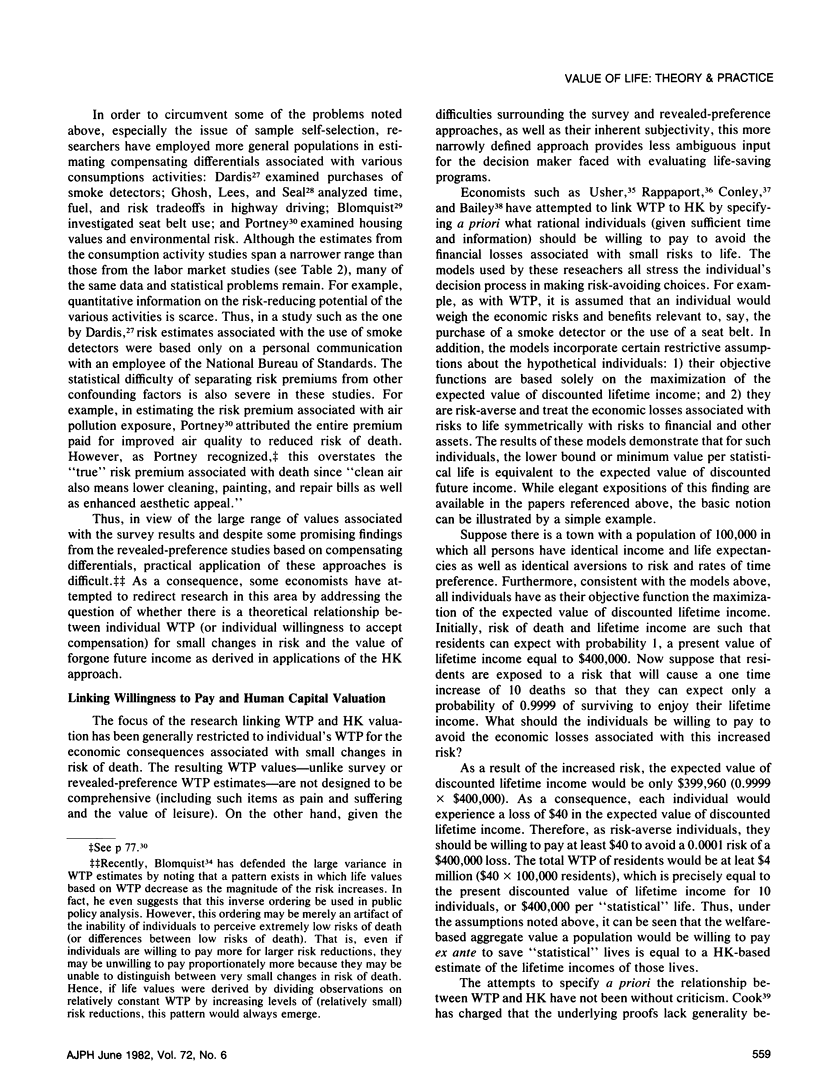

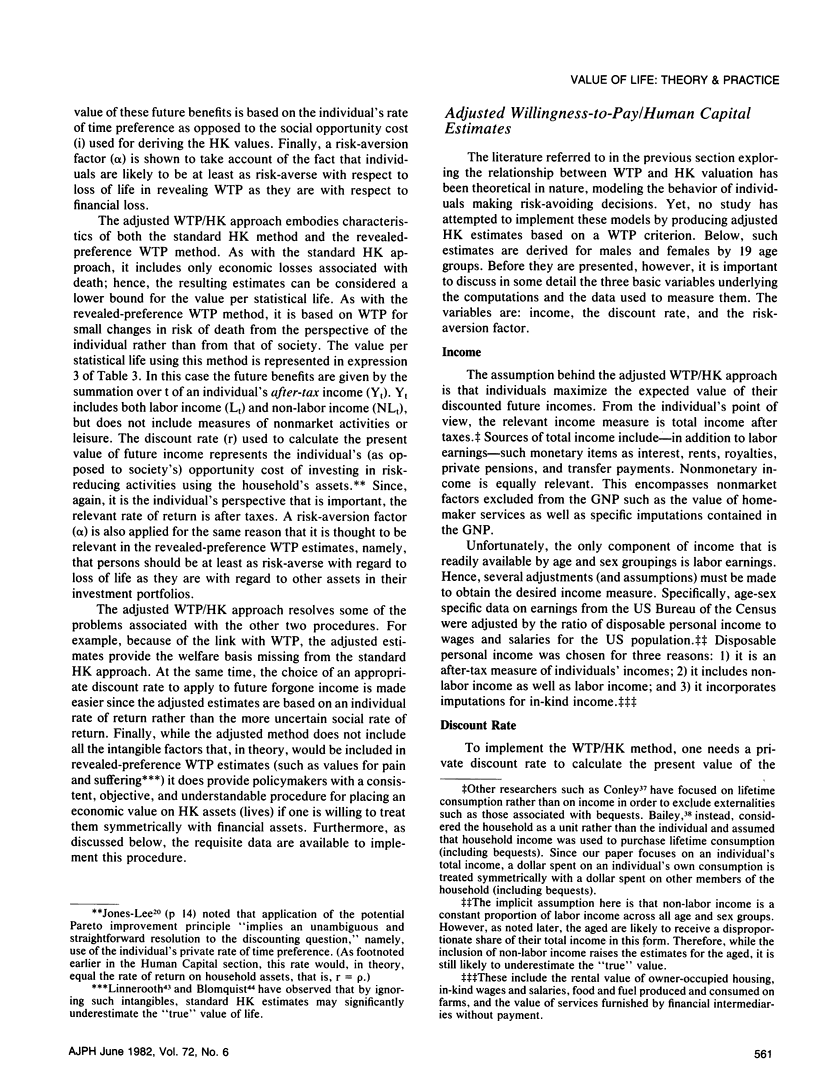

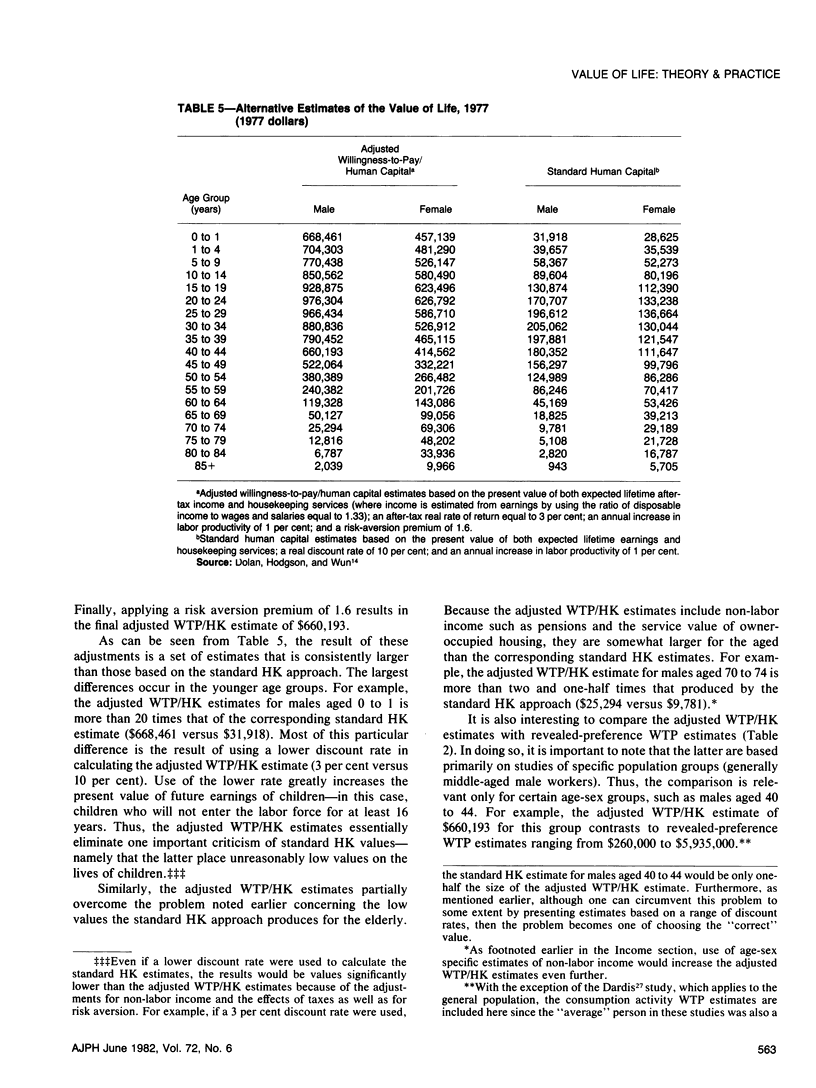
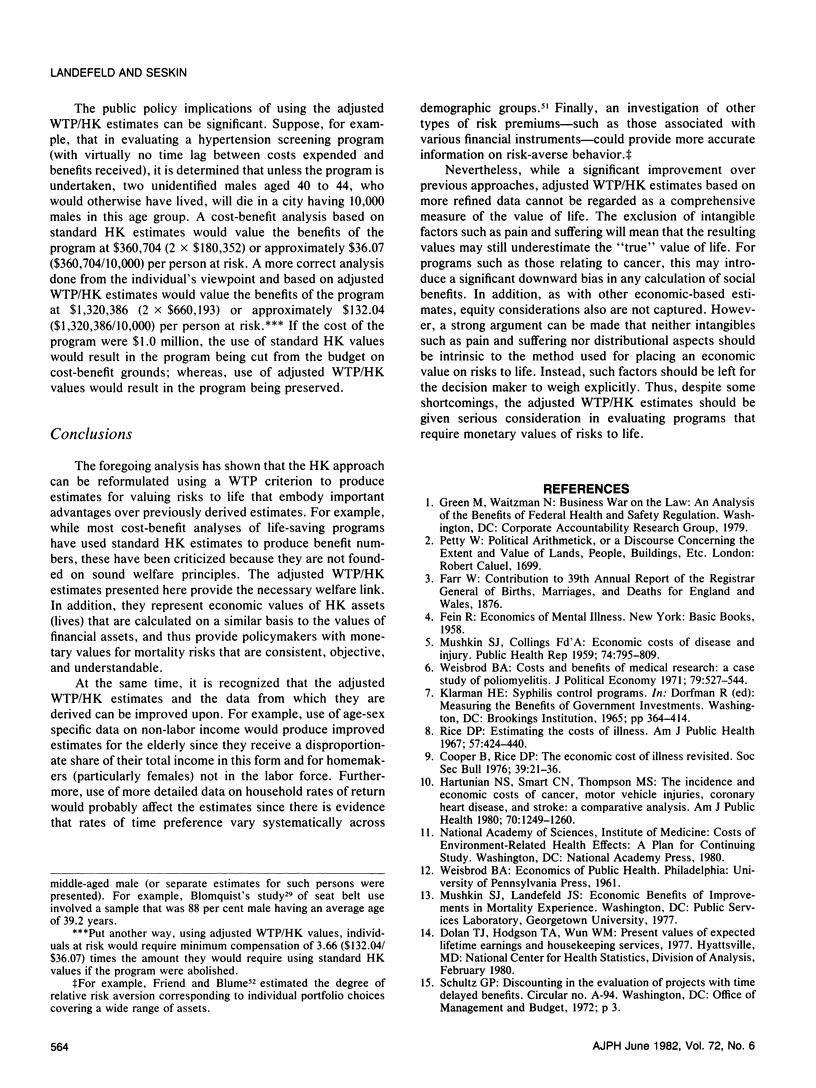
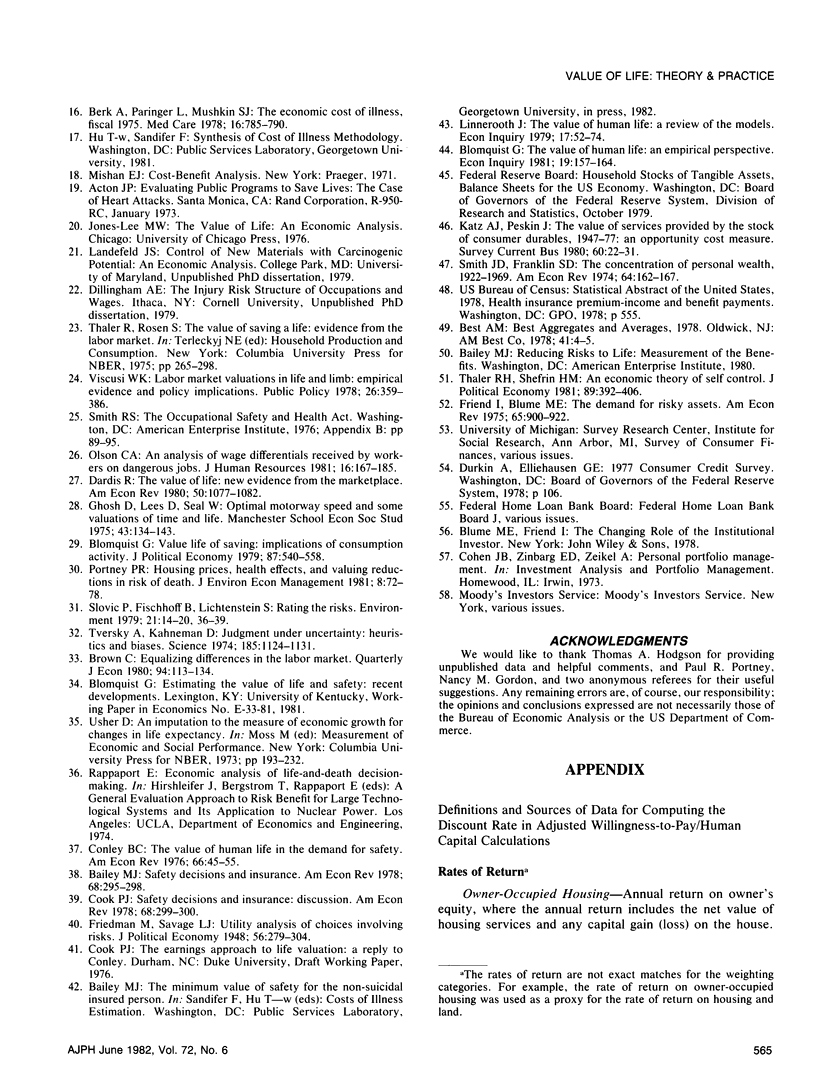
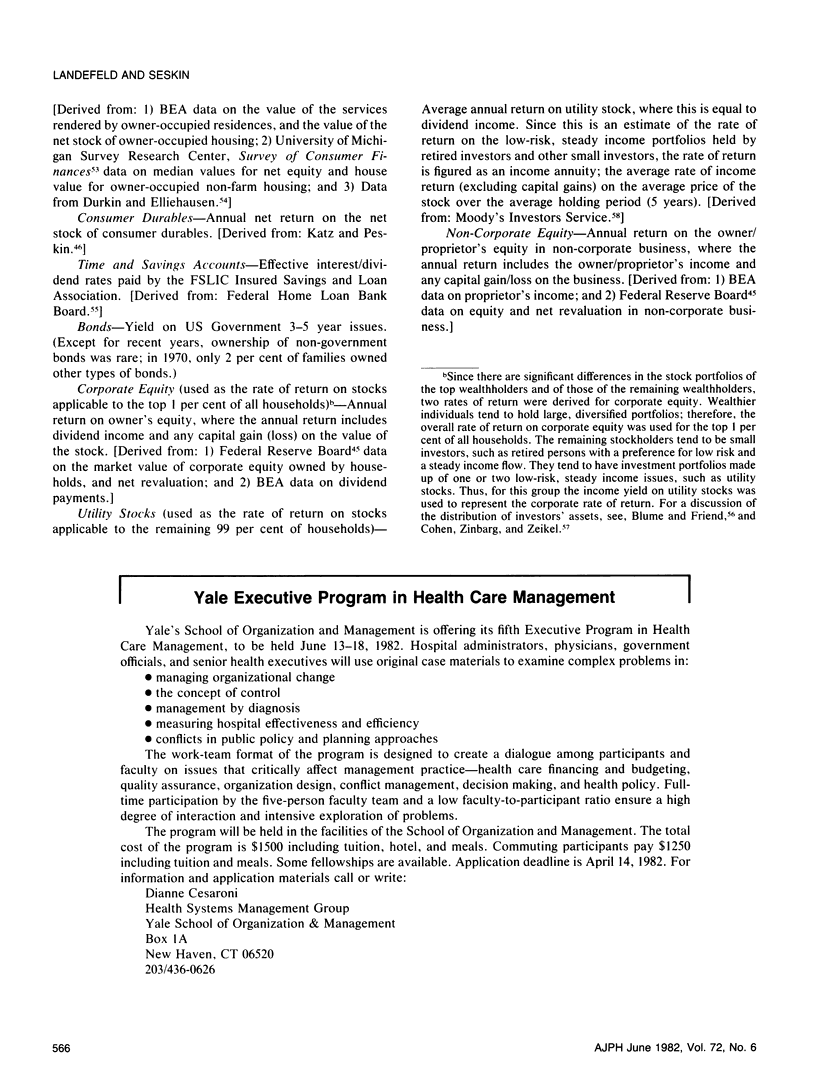
Selected References
These references are in PubMed. This may not be the complete list of references from this article.
- Berk A., Paringer L., Mushkin S. J. The economic cost of illness: fiscal 1975. Med Care. 1978 Sep;16(9):785–790. doi: 10.1097/00005650-197809000-00009. [DOI] [PubMed] [Google Scholar]
- Blomquist G. The value of human life: an empirical perspective. Econ Inq. 1981 Jan;19(1):157–164. doi: 10.1111/j.1465-7295.1981.tb00609.x. [DOI] [PubMed] [Google Scholar]
- Cooper B. S., Rice D. P. The economic cost of illness revisited. Soc Secur Bull. 1976 Feb;39(2):21–36. [PubMed] [Google Scholar]
- Hartunian N. S., Smart C. N., Thompson M. S. The incidence and economic costs of cancer, motor vehicle injuries, coronary heart disease, and stroke: a comparative analysis. Am J Public Health. 1980 Dec;70(12):1249–1260. doi: 10.2105/ajph.70.12.1249. [DOI] [PMC free article] [PubMed] [Google Scholar]
- Linnerooth J. The value of human life: a review of the models. Econ Inq. 1979 Jan;17(1):52–74. doi: 10.1111/j.1465-7295.1979.tb00295.x. [DOI] [PubMed] [Google Scholar]
- MUSHKIN S. J., COLLINGS F. D. Economic costs of disease and injury. Public Health Rep. 1959 Sep;74:795–809. [PMC free article] [PubMed] [Google Scholar]
- Rice D. P. Estimating the cost of illness. Am J Public Health Nations Health. 1967 Mar;57(3):424–440. doi: 10.2105/ajph.57.3.424. [DOI] [PMC free article] [PubMed] [Google Scholar]
- Tversky A., Kahneman D. Judgment under Uncertainty: Heuristics and Biases. Science. 1974 Sep 27;185(4157):1124–1131. doi: 10.1126/science.185.4157.1124. [DOI] [PubMed] [Google Scholar]
- Viscusi W. K. Labor market valuations of life and limb: empirical evidence and policy implications. Public Policy. 1978 Summer;26(3):359–386. [PubMed] [Google Scholar]


